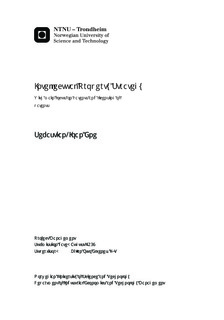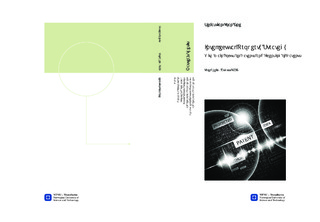| dc.description.abstract | Paying the fees for patents is expensive. Therefore, a selection has to be made on which patent applications should be submitted and which not, and where. This is because each country has its own IP system and its own fees. Moreover, what kind of strategy is to be considered for licensing, if any. The study is concentrated or limited mainly to patents. Trademarks, copyrights, trade secrets, although they constitute IP elements too, they will not be treated in detail in this study. The reason is because there is that there is not only a sheer size of the scholar literature regarding these other systems, but in addition, I find that deeper details may be assured in discussing patents, for the given limit of the thesis length.
The study is mainly theoretical; it shall discuss in detail the issues and strategies that the companies might like to adapt when dealing with intellectual property. The research methodology is literature survey, for which the latest trends in intellectual property have been searched for and described using the web search tools of the library (http://www.ntnu.no/ub accessed August 2014), NTNU library s books and the Google Scholar search engine (http://scholar.google.com accessed August 2014).
The departing point of the study is Chapter 1, with the history of patents, costs implied by patents, challenges of IP systems, reasons why companies apply for patents, presentation of the situation of the patent market, its contributors and influence, its development and its trends, some thoughts on the value of patents and what patents can not do. Then, the various options of the IP holders and IP non-holders are presented in Chapter 2. Also, various views of the IP strategy are presented, such as the analogy with the military strategy, and the high tempo patent strategy or IP strategies at the level of the organization. In chapter 3, various patent-related peculiarities of different geographical locations are presented together with methods of negotiation, issues of interest for patents for the respective markets and personal opinions, without considering the implied costs of the respective IP systems. The conclusions and the personal proposal of the processes IP framework are presented in Chapter 4. Chapter 5 mentions the references.
The major finding of the study is that there is no perfect IP strategy, but rather best is to consider an adaptable IP strategy, continuously tuned to the environment. Among the recommendations that I formulated, alternative dispute resolutions should be included in the licensing contract, to avoid costly litigation situations. Moreover, I observed that it is very important to spend the time to create and continuously update a database of patents and patents applications, to avoid unnecessary costs for ongoing patents or risking a lapse of patents. In addition, patenting in all 196 countries of the world is too expensive to be an option to consider in practice. An idea that I did not see mentioned in literature is having a patent of a solution that is not to be sold in practice. This ensures continuous revenues from the competition, as it would be more cost-effective for it to send payments to the patent owner compared to shifting upwards processes & equipment to the newer technology. A summary of the top 50 IP strategy mistakes presented by Duncan Bucknell, an experienced IP broker from Australia, is offered in Table 3 in the Appendix.
For non-IP holders, some observations that I make are that if they consider disseminating rapidly, they should probably consider an IP insurance. I consider that lapsed patents may present themselves with unthought opportunities, together with startups that are based on a specific technology. For various reasons (timing in market, marketing, finances, legislation, risks), startups might not be successful, even if their core patented technologies are extremely promising. Here I think comes the opportunity for the non-IP holder to acquire the patents of interest, or license them, or use the respective information freely, if the patents were lapsed because the maintenance fees were not covered. | |

